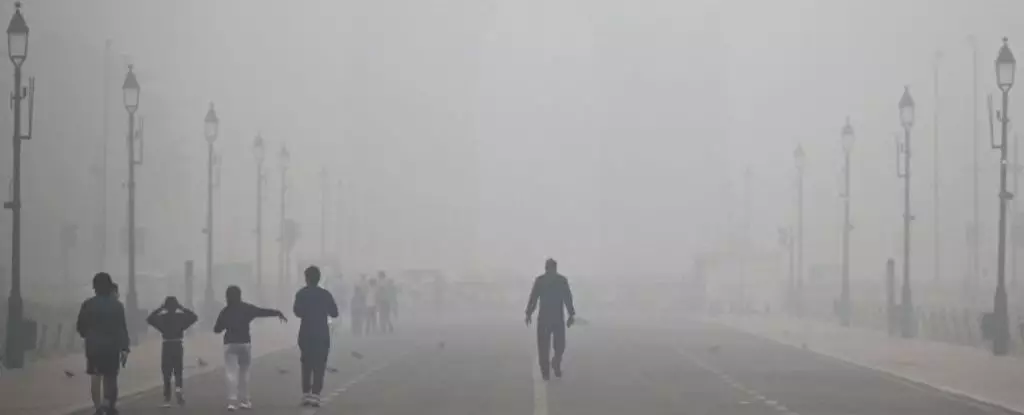Lung cancer, long associated with tobacco smoking, is increasingly emerging among populations that have never lit a cigarette. This alarming shift challenges traditional understanding and compels a reevaluation of risk factors. Historically, cigarette smoke was considered the primary culprit, fueled by decades of research that painted a clear link between smoking and lung tumors. Yet, recent international studies suggest that environmental pollution, particularly fine particulate matter in the air, might play an equally sinister role. This revelation underscores the urgent need to address air quality as a genuine public health concern and rethink what constitutes cancer risk in non-smokers.
What makes this development particularly compelling is the scientific evidence pointing toward a genomic link. The recent comprehensive analysis of lung tumors from over 800 individuals across different continents revealed striking similarities in DNA mutations between smokers and non-smokers exposed to high pollution levels. It signals that the molecular signatures typically associated with tobacco carcinogens are also present in those who have not smoked but inhale polluted air daily. This insight forces us to question the narrow focus on smoking as the sole environmental factor in lung carcinogenesis and opens the door to more nuanced, multifactorial explanations.
Deciphering the Molecular Machinery Behind Pollution-Induced Mutations
The crux of the research involved examining the genetic makeup of lung tumors, with a focus on specific mutations such as TP53, EGFR, and patterns of short telomeres. These alterations are widely recognized as hallmarks of lung cancer in smokers, but their presence in non-smokers living in polluted environments hints at an insidious, environmental mutagen at play. The study identified a mutational signature known as SBS4, often linked to tobacco carcinogens, in non-smokers exposed to high levels of outdoor smog and soot—nearly four times more than those in cleaner regions.
This correlation between pollution and mutation signature reveals more than just a statistical association. It suggests that the physical and chemical properties of polluted air, particularly fine particulate matter, can induce DNA damage in lung cells akin to that caused by cigarette chemicals. In this light, air pollution emerges not merely as a background environmental nuisance but as a bona fide mutagen capable of initiating and promoting tumorigenesis.
Furthermore, the discovery that shorter telomeres are prevalent among highly exposed individuals is significant. Telomeres are protective DNA caps at chromosome ends, and their shortening signals cellular aging and genomic instability—conditions conducive to cancer development. This link indicates that pollution not only induces mutations but may accelerate biological aging processes, compounding the risk of carcinogenesis.
While secondhand smoke was also studied, its impact on DNA mutation signatures appeared minimal compared to outdoor air pollution. This nuanced differentiation underscores the potency of environmental pollutants over passive smoking in mutating lung tissue. The implications are profound: even in cases where smoking history is negligible or absent, the environment might interact with genetic predispositions to foster cancer.
Unraveling the Unknown: New Mutational Signatures and Their Implications
One of the most intriguing findings of this research is the identification of a novel mutational signature labeled SBS40a. Unlike SBS4, which has a known link to smoked tobacco, SBS40a’s origins remain elusive. Its prevalence among non-smokers with lung cancer suggests a different, perhaps yet undiscovered, environmental or biological driver. The fact that this signature has no clear environmental correlate compels scientists to dig deeper into possible sources, which might include urban chemical pollutants, indoor air contaminants, or even biological factors like viral exposures.
This unknown signature exemplifies how much we still have to learn about the intricate pathways leading from environmental exposure to genetic damage. Its widespread presence points to the existence of hidden mutagens lurking unnoticed within our shared environments. It highlights the importance of expanding research beyond traditional factors, embracing a comprehensive approach that considers emerging molecular data, environmental assessments, and lifestyle variables.
The limitations of current studies—such as reliance on regional pollution data rather than personal exposure metrics—do not diminish the significance of these findings. Instead, they underscore the necessity for future research to incorporate more precise individual exposure assessments, perhaps utilizing personal air quality monitors. Only then can causal links be firmly established, paving the way for targeted public health interventions.
The Broader Impact: Rethinking Public Health Strategies
This evolving understanding radically shifts the narrative about lung cancer risks. It suggests that policies solely targeting smoking cessation, while vital, are insufficient. Equally important is the implementation of stricter air quality standards and urban planning initiatives aimed at reducing pollution levels. Cities with higher smog concentrations, especially in economically disadvantaged areas, might inadvertently foster environments where lung cancers can develop silently in non-smokers.
Moreover, this insight is a call to action for global health agencies. It urges them to broaden their focus beyond individual behaviors to encompass environmental quality control. Making air cleaner is no longer just an ecological concern but a cornerstone of cancer prevention strategy. Public awareness campaigns must evolve to communicate risks associated with polluted air, fostering more community activism and policy change.
Finally, there’s a profound ethical consideration: environmental justice. Historically marginalized communities often bear the brunt of urban pollution, exposing their populations to higher mutagenic risks. Recognizing pollution as a tangible carcinogen places additional responsibility on governments and industries to prioritize equitable access to clean air for all citizens. Preventing lung cancer in non-smokers may ultimately depend more on the air they breathe than on their personal choices.
This emerging body of evidence challenges entrenched assumptions about lung cancer etiology. It underscores the importance of integrating environmental health into the cancer prevention paradigm, emphasizing that reducing pollution might be one of the most potent weapons we have against a silent, pervasive threat to public health.

